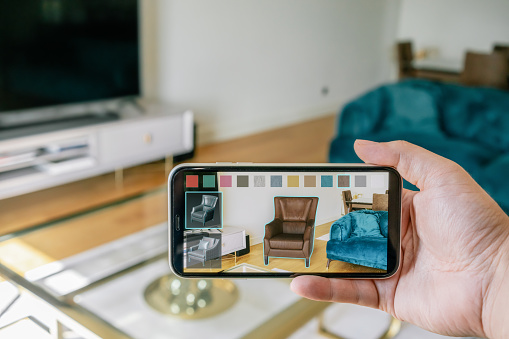Editor’s note: Devora Rogers is chief strategy officer for market research consultancy Alter Agents, Los Angeles.
Using augmented reality to understand consumer purchase patterns
As brands seek to understand changing shopper behavior – with little resemblance to past consumer purchase patterns – many are looking for a different approach to market research. The need for holistic insights is critical, and this means examining data in context, blending sources to understand and predict behaviors.
In such a turbulent landscape, future-proofing shopper experience and engagement is no easy feat. Narrowing down the focus of the research, as well as looking at outside consumer trends and their influence on the shopping ecosystem, can help put things in perspective. That’s just what Snapchat and Publicis Media wanted to do when they engaged with our team to explore augmented reality (AR).
Snapchat and Publicis Media wanted to understand the impact of augmented reality experiences that are promoting a brand, product or service. Some recognizable examples are beauty product experiences that allow users to try on makeup digitally or use home decorating apps for digitally placing new furniture or decor in an actual room in the home to see how it will look. Dubbed branded AR, the study found that people are seeking it out during their shopping journey.
Augmented reality and the shopper journey
 To uncover the data, we surveyed 4,000 individuals, split evenly among the United States, the United Kingdom, France and Saudi Arabia. All respondents were smartphone owners and had some level of knowledge of or interest in AR. Before launching the quantitative survey portion of the study, we conducted in-depth interviews with experts to explore the changing dynamics of AR to provide context. After the survey, we conducted mobile ethnographies with daily diary entries, specifically for those who had previously used AR for shopping.
To uncover the data, we surveyed 4,000 individuals, split evenly among the United States, the United Kingdom, France and Saudi Arabia. All respondents were smartphone owners and had some level of knowledge of or interest in AR. Before launching the quantitative survey portion of the study, we conducted in-depth interviews with experts to explore the changing dynamics of AR to provide context. After the survey, we conducted mobile ethnographies with daily diary entries, specifically for those who had previously used AR for shopping.
The data indicates that branded AR experiences can positively impact and influence consumers at multiple points along the shopper journey, informing purchases, boosting positive brand perceptions and educating consumers.
Augmented reality’s influence on consumers
- Purchase decisions are spurred by AR. Branded AR experiences increase the likelihood to purchase, particularly in categories like home decor (73%), product personalization (73%), virtual try-on (72%) and product demonstration (70%).
- High AR awareness and adoption. More than half of people ages 13-49 claim to have used AR in the past, and nearly one-third have used branded AR. Snapchatters are 56% more likely than non-Snapchatters to have used branded AR.
- Increasing role of AR in the shopping landscape. More than three in four believe AR technology will play a role in how people shop in the next five years. Two in three who say they would use branded AR for shopping also agree they are likely to purchase after a branded AR experience.
- Consumers are looking for AR. Fifty-four percent actively search for AR experiences, most commonly seeking out branded AR by searching within the camera on digital platforms like Snapchat.
- AR shareability heightens impact. Sixty-one percent say the ability to easily share branded AR experiences is important to them.
Studies like this can help give brands a new perspective on what can drive consumer purchase behavior, as well as how to delight people with the experiences they seek while shopping. But there’s more to learn here, far beyond AR, when it comes to shopper research.
Best practices for shopper research
Secondary research has shown that consumers are expecting more from brands, looking to them to support their own values and provide leadership during uncertain times. This study shows that technology-forward practices, such as augmented reality, have a role to play in this ecosystem. But AR is certainly not the only digital transformation that the consumer landscape is experiencing.
Use market research strategies to gain the necessary granular, nuanced understanding of audiences.
- Narrow the focus. When we’re trying to understand exactly which aspects of an evolving technology work for shoppers, especially as they begin to adopt it into their personal strategies, going too broad muddies your insights. In a world where consumers expect personalized experiences and advertising is hyper-targeted, the level of detail in the research that drives your business decisions really matters. So get into the weeds!
- Use multiple techniques. Shoppers aren’t simple and your research shouldn’t be either. When you’re looking into new technologies or innovative approaches, consider blending methodologies to get the most holistic view of shoppers as possible. My team has found in our research that multi-modal approaches to projects render the insights that brands need for decision-making.
- Look outside your bubble. Chances are that your brand may not have used something like AR in your promotional toolkit. With further research you might find it’s a perfect fit for your audience. Just like AR, there are many trends – technology-driven and otherwise – that can inform your approach. Keep an eye out for these trends and then tap into your audience with research strategies to see what their reactions and preferences might be. It can keep you one step ahead of their needs.
Modifying your approach to shopper research
Shopping is changing at every level. Consumers are digitizing their lives, so it makes sense that our research found that technology like AR is appealing to them when it comes to their purchase journeys. What other approaches are you missing? The right shopper research approach can help you be proactive and deliver what your audience is seeking – maybe before they know they are looking for it.
